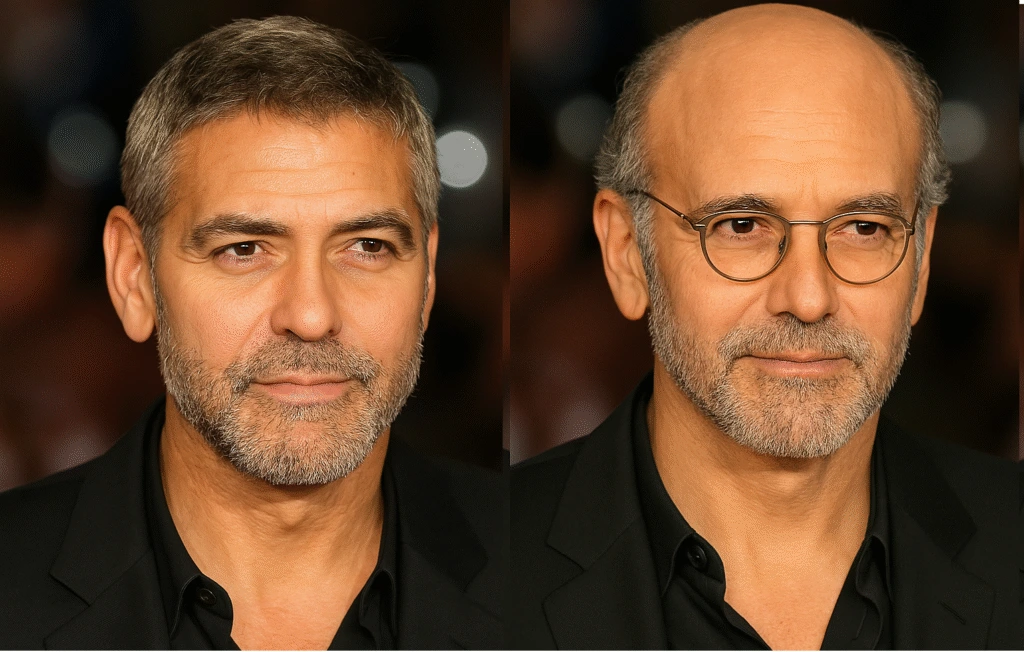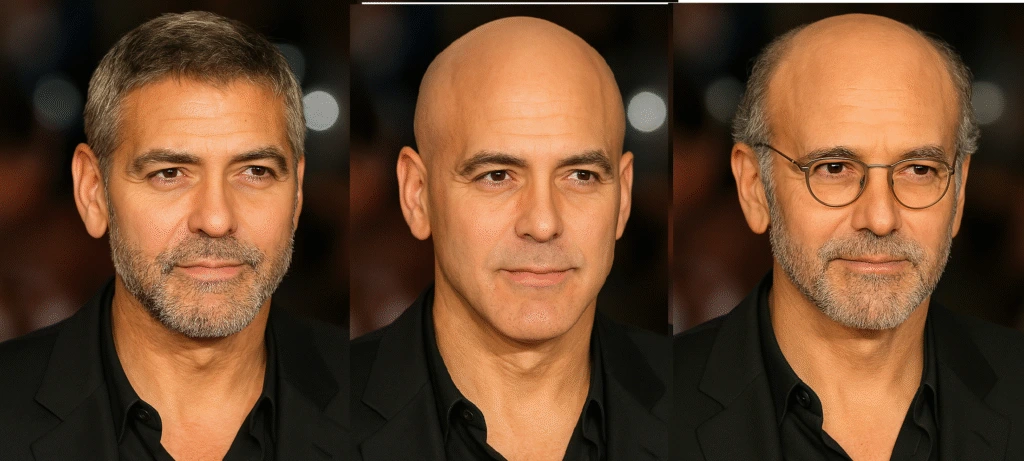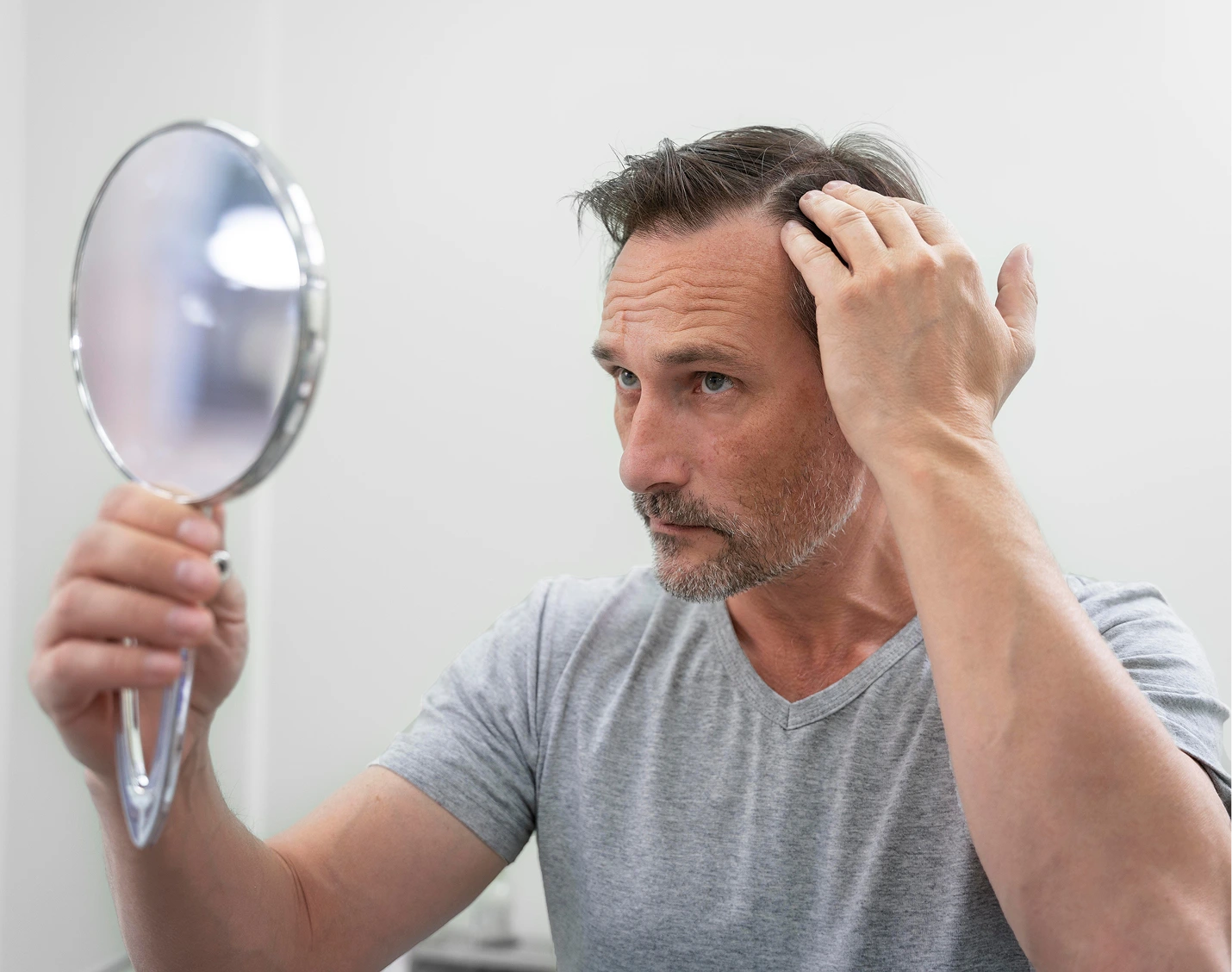Table of Contents
- Understanding Hair Loss
- Causes and Risk Factors
- The Attractiveness Factor: Does Male Pattern Baldness Hold Men Back?
- The Sexual Marketplace Value Gap: Timing Is Everything
- Beauty Standards in Flux: Is Androgenetic Alopecia the New Obesity?
- Modern Solutions: From Finasteride to Hair Transplants
- The Feedback Loop: Perception, Adaptation, and Confidence
- Take Control of Your Hair—and Your Confidence

But here’s the good news: whether you’re considering finasteride, a hair transplant, or simply embracing the bald look, there are more options than ever to take control. Let’s dive into the baldness treatment landscape and explore how hair loss shapes men’s lives—and what you can do about it.
Understanding Hair Loss
What is Male Pattern Baldness?
Male pattern baldness, also known as androgenetic alopecia, is a common type of hair loss that many men face. Imagine looking in the mirror and noticing your hairline slowly creeping back or seeing more scalp than hair on the crown of your head. This isn’t just a bad hair day—it’s the hallmark of male pattern baldness. The culprit? A hormone called dihydrotestosterone (DHT), which is derived from testosterone. DHT causes hair follicles to shrink over time, leading to thinner hair and eventually, hair loss. This process often starts with a receding hairline and can progress to significant thinning on the top of the head.
Who Does Male Pattern Baldness Affect?
Causes and Risk Factors
Genetics and Androgenetic Alopecia
The Attractiveness Factor: Does Male Pattern Baldness Hold Men Back?
A 2020 study in Evolutionary Psychology revealed a hard truth: women consistently rate balding men as less attractive than their full-haired counterparts. The study, which used digitally manipulated images to isolate hair loss, found that balding men were perceived as older and less healthy—evolutionary red flags tied to youth and vitality. This isn’t about personality or status; it’s about raw physical appeal.
Now, consider the workplace in 2025. Women are increasingly in charge of hiring and firing, especially in client-facing roles like sales where first impressions are everything. If a female hiring manager subconsciously favors a man with a full head of hair, could that bias impact a balding man’s chances? There’s no hard data on earnings, but the study suggests a subtle disadvantage in industries where looks matter. For men dealing with thinning hair, this can feel like an unfair hurdle—one they didn’t sign up for.

The Sexual Marketplace Value Gap: Timing Is Everything
The concept of sexual marketplace value (SMV) has long sparked debate. A 2012 blog post by The Rational Male included a now-iconic chart claiming women peak in their early 20s while men hit their stride in their mid-30s. Here’s the chart:

The author, Rollo Tomassi, admitted its subjectivity, writing, “Personally I think this presumption is fraught with individual bias, both intended and unintended. And make no mistake, I’m about to define the SMP and sexual market values (SMV) from my own perception, but I fully recognize the want for defining these dynamics in a clear, understandable format, so I’ll beg forgiveness for this indulgence.” It’s not hard data, but a stylized take on a broader idea: men often peak later than women.
I think there’s truth here. Women often seek men who are older, more established, and further along in their careers—someone who offers security and stability. Men in their 30s, typically at the height of their earning potential and confidence, can be more appealing than their younger counterparts, even if physical attractiveness takes a hit. But here’s the catch: this is also when male pattern baldness often kicks into high gear. Similarly, female pattern baldness, which is also genetic, can affect women, though it typically manifests differently and is less common. The Evolutionary Psychology study suggests baldness can make men appear older and less desirable, undermining their SMV just as they’re hitting their stride. It’s a cruel twist: as a man becomes a “catch” in terms of resources and status, his thinning hair might make him less of one in the dating market.
Beauty Standards in Flux: Is Androgenetic Alopecia the New Obesity?
Baldness feels like it’s on a similar path. Men have leaned into the shaved head look, and for many, it works. Think Dwayne Johnson or Jason Statham—bald, confident, and magnetic. But they’re overcoming a challenge, not erasing it. The shaved head is a strategic pivot, a way to take control of hair loss.

Comedian Larry David, who’s been candid about his gradual thinning hair, has a different take. He talks about the “Balding community”—a half-joking solidarity among balding men. But as he puts it, it’s a loser’s group. Deep down, you’d rather not be in it. There’s a subtle resignation there, a sense that baldness marks you as “other,” even if you’re making light of it.

Modern Solutions: From Finasteride to Hair Transplants

Hair restoration has come a long way, with FUE (follicular unit extraction) leading the charge. This technique takes donor follicles from the back of the head—naturally resistant to DHT, the hormone behind male pattern baldness—and implants them into thinning areas. The hair follicle plays a crucial role in this process, ensuring the transplanted hair grows naturally. Hair transplantation procedures, such as FUT and FUE, have become more refined, offering effective solutions for those seeking to restore their hair.
But here’s the kicker: without a baldness treatment like finasteride to maintain the surrounding native hairs, you might end up with an unnatural “monk’s pattern,” where the transplanted hairline stays intact but new thinning emerges just beyond it. It’s like laying new sod but refusing to water the rest of the lawn. Hair transplant surgery is most effective when combined with medical treatments to enhance long-term success and prevent unnatural outcomes.
Finasteride has become a lightning rod in the hair regrowth conversation. A recent Wall Street Journal article highlighted cases where young men suffered side effects from the drug, often prescribed through telehealth services like Hims and Keeps. The piece tapped into a cultural trend of sensationalizing risk while downplaying benefits, especially for treatments that enhance quality of life rather than directly saving it. But the reality is more balanced. Millions of men take finasteride without issue, benefiting from its ability to slow hair loss and even promote hair regrowth. Side effects like sexual dysfunction, though real, are rare, and if they occur, the solution is simple: stop taking it. Plus, finasteride offers long-term benefits like reduced prostate growth—something often overlooked in alarmist reports. Androgens stimulate hair growth in areas like the beard and axillary regions, but can also suppress hair growth on the scalp in genetically predisposed individuals.
The criticism of finasteride reveals a double standard. Society cheers on obesity treatments like Ozempic, yet when young men seek baldness solutions—something that undeniably impacts self-esteem and social standing—they’re met with skepticism and accusations of vanity. If a 25-year-old feels more confident in his dating life and professional interactions because he has hair, why is that less valid than someone taking weight-loss medication to feel better in their skin? We accept gym memberships, Botox, and other aesthetic treatments as reasonable self-improvement. Why is hair restoration different? Female pattern hair loss also requires effective treatments, often involving medications and lifestyle changes to manage the condition.
Continuous use of treatments like finasteride and minoxidil is crucial to prevent further hair loss and maintain the benefits. Stopping these treatments can lead to irreversible hair loss, emphasizing the importance of a consistent regimen.
The Feedback Loop: Perception, Adaptation, and Confidence
The impact of male pattern hair loss creates a cycle. Women perceive balding men as less attractive, which might influence hiring decisions in roles where looks matter. Men, aware of this bias, adapt—shaving their heads, hitting the gym harder, or turning to Medspa hair solutions like hair transplants and treatments like finasteride and dutasteride. Society, in turn, tweaks its beauty standards, sometimes embracing the “bald is beautiful” narrative while quietly clinging to old biases. And all the while, the SMV gap—real or perceived—adds pressure for men in their 30s, who are navigating a world where their value hinges on a mix of looks, status, and confidence.
There’s a tension in how we approach these adaptations. On one hand, there’s beauty in aging gracefully, staying within your biological limits, and prioritizing long-term health over vanity. On the other, looking good often translates to real benefits, whether it’s landing a job or a date. The gung-ho attitude of juicing up on testosterone or shaving it all off can feel like overcompensation, while Larry David’s self-deprecating humor might be closer to the mark than RFK Jr.’s muscle-bound reinvention.
Take Control of Your Hair—and Your Confidence
There are no easy answers here. Baldness might cost you a few points in the attractiveness game, and that could ripple into your career or dating life. But it’s also a challenge men have been tackling for centuries, whether through humor, reinvention, or modern baldness treatments. The question is whether we’ll ever truly reframe baldness the way we’ve tried to reframe obesity—or if, deep down, we’ll always see the “Baltic community” as a club most men would rather avoid.
If you’re ready to take control of your hair loss, Regeneris Medspa’s partner, New England Center for Hair Restoration offers a range of options. From FUE hair transplants to finasteride for hair regrowth, you can find a baldness solution that fits your goals. Treatments for female pattern hair loss, such as minoxidil and hormonal therapy, are also available and can be effective in managing this condition. Don’t let a receding hairline hold you back—whether you’re aiming to boost your confidence in the boardroom or the dating scene, there’s never been a better time to explore hair restoration.
What’s your take? Are we on the verge of a baldness renaissance, or are we just kidding ourselves? And if you’ve considered finasteride or a hair transplant, what’s holding you back? Let’s keep the conversation going in the comments!
Peak Masculinity
Starts Here

By Dr. Ryan Welter
August 16, 2025




